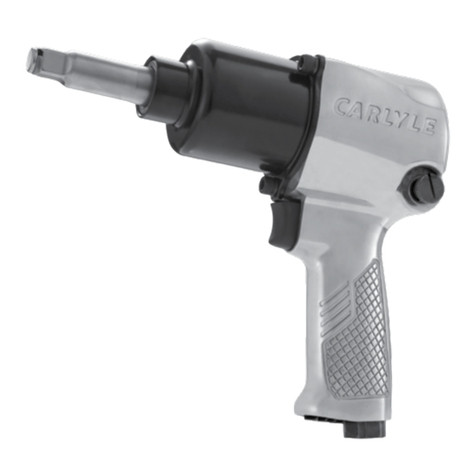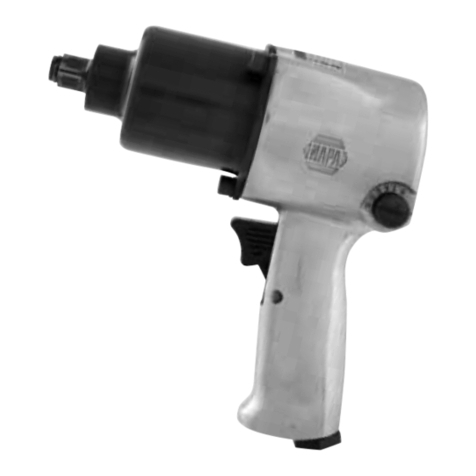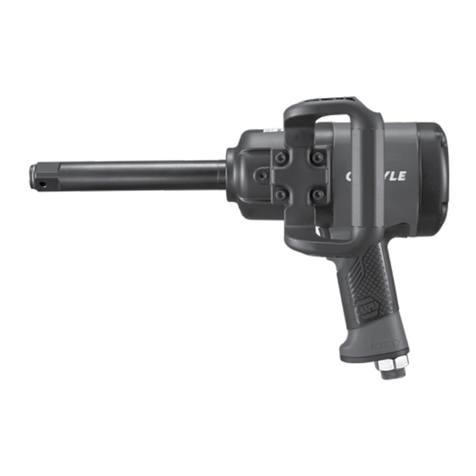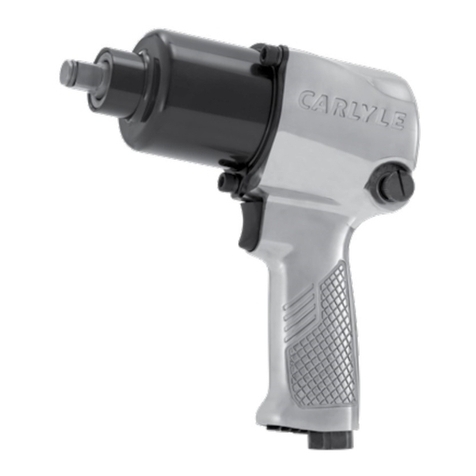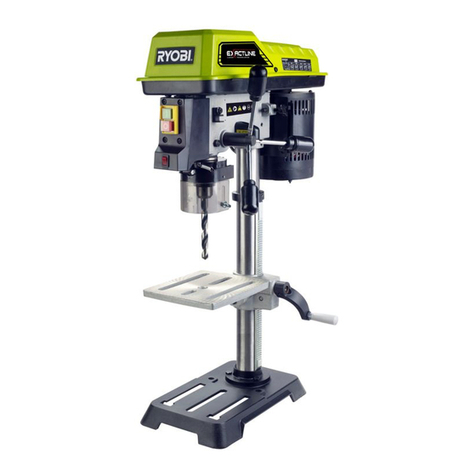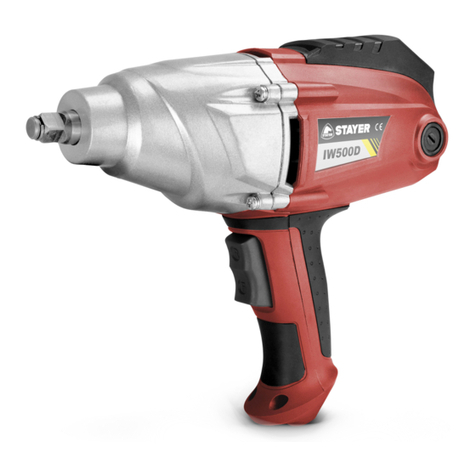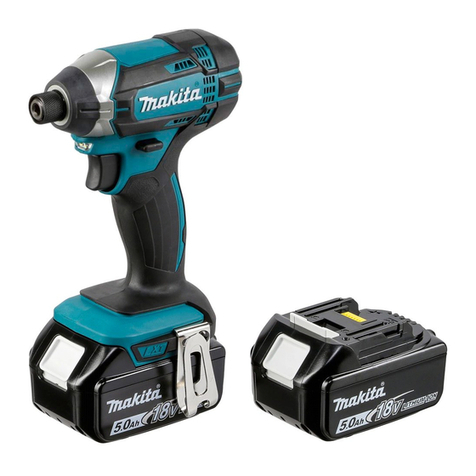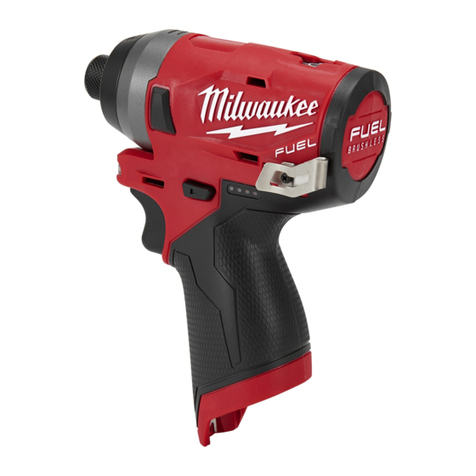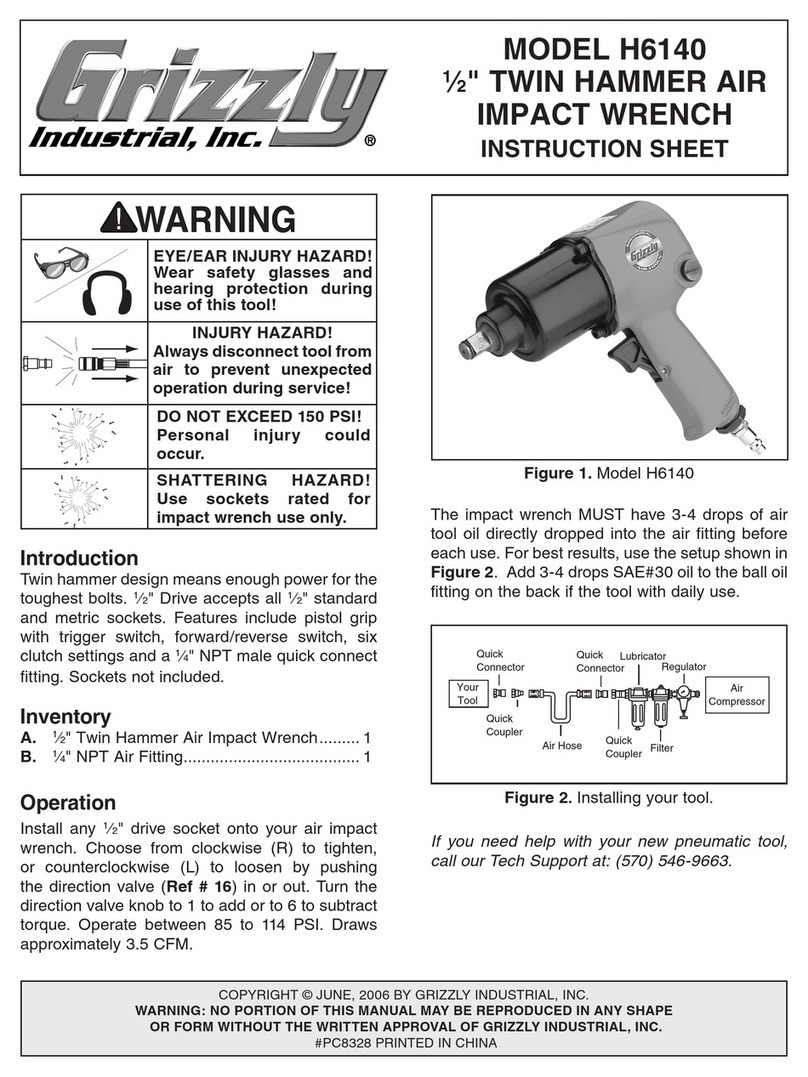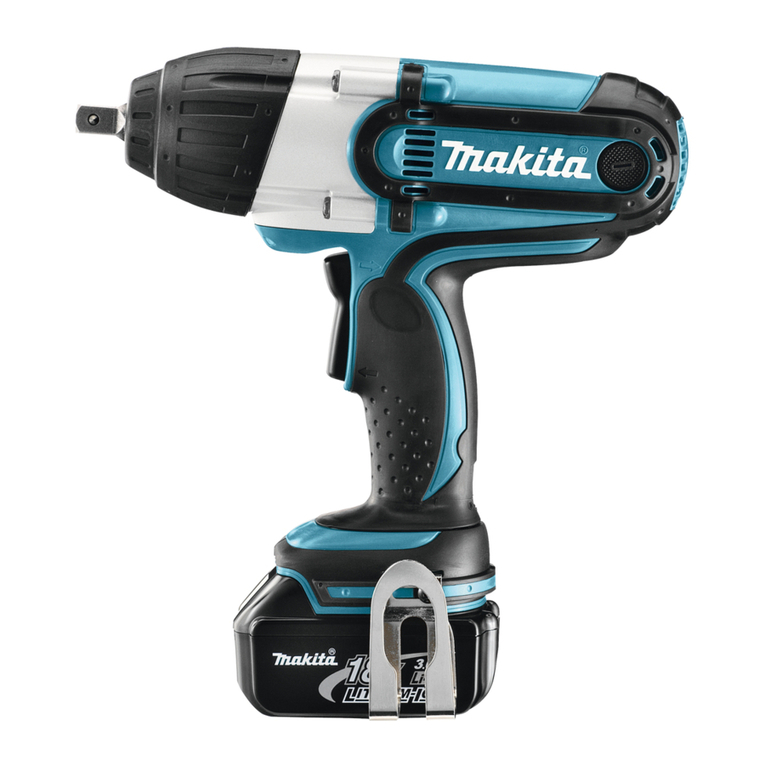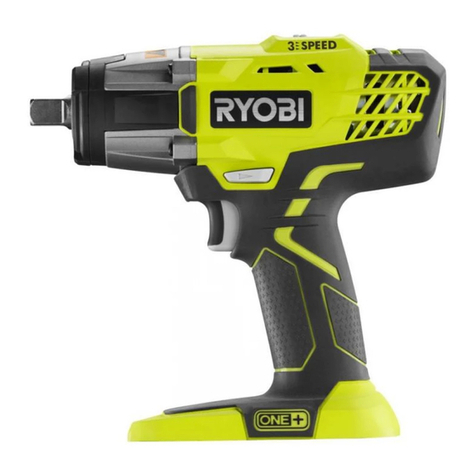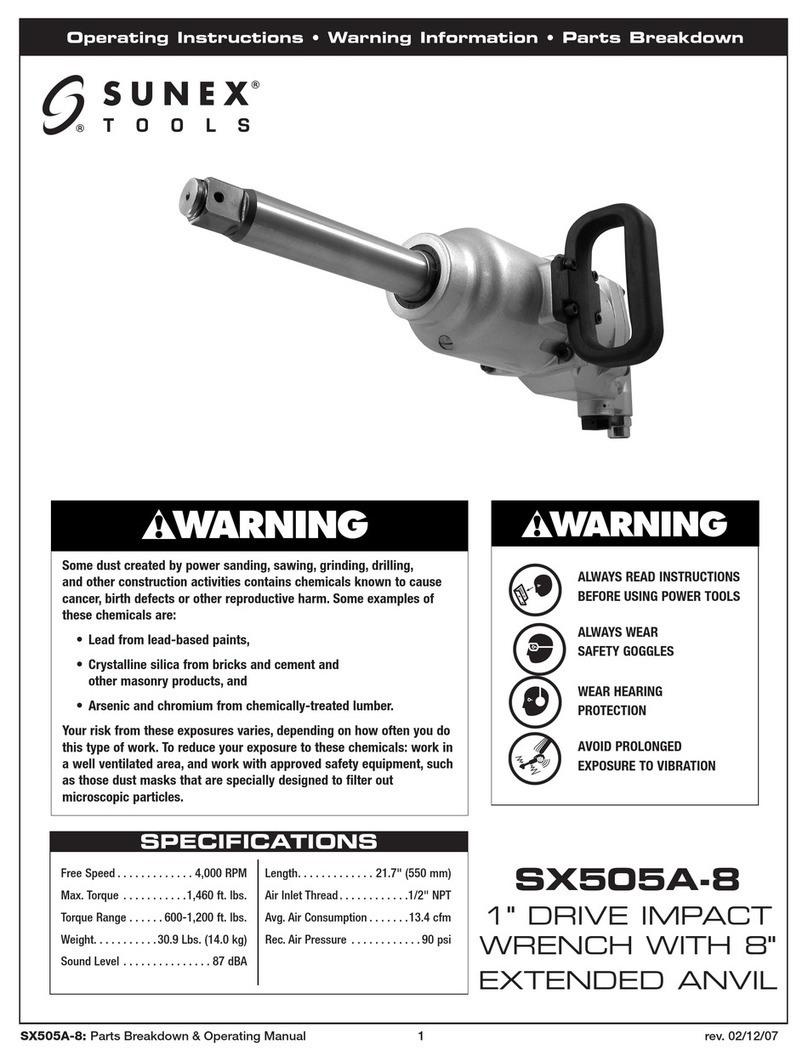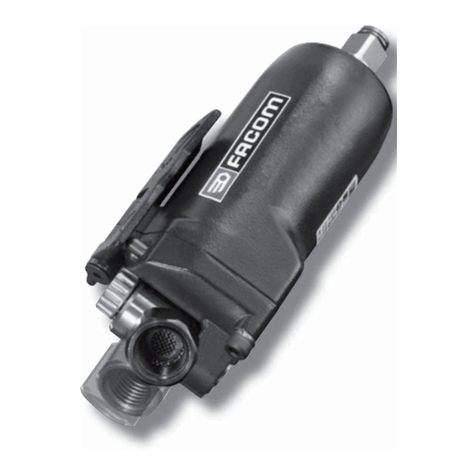
▲WARNING!
FAILURE TO OBSERVE THESE WARNINGS COULD RESULT IN INJURY.
This insTrucTion Manual
conTains iMporTanT safeTy
inforMaTion.
read This insTruc-
Tion Manual care-
fully and under-
sTand all inforMa-
Tion Before operaT-
ing This Tool.
• Always operate, inspect and
maintain this tool in accor-
dance with American Nation-
al Standards Institute Safety
Code of Portable Air Tools
(ANSI B186.1) and any other
applicable safety codes and
regulations.
• For safety, top performance
and maximum durability of
parts, operate this tool at 90
psig 6.2 bar max air pressure
with 1⁄2" diameter air supply
hose.
• Always wear impact-resistant
eye and face protection when
operating or performing main-
tenance on this tool. Always
wear hearing protection when
using this tool.
• High sound levels can cause
permanent hearing loss. Use
hearing protection as recom-
mended by your employer or
OSHA regulation.
• Keep the tool in efficient oper-
ating condition.
• Operators and maintenance
personnel must be physical-
ly able to handle the bulk,
weight and power of this
tool.
• Air under pressure can
cause severe injury. Never
direct air at yourself or others.
Always turn off the air supply,
drain hose of air pressure and
detach tool from air supply
before installing, removing or
adjusting any accessory on this
tool, or before performing
any maintenance on this tool.
Failure to do so could result in
injury. Whip hoses can cause
serious injury. Always check
for damaged, frayed or loose
hoses and fittings, and replace
immediately. Do not use quick
detach couplings at tool. See
instructions for correct set-up.
• Air powered tools can vibrate
in use. Vibration, repetitive
motions or uncomfortable
positions over extended peri-
ods of time may be harmful
to your hands and arms. Dis-
continue use of tool if discom-
fort, tingling feeling or pain
occurs. Seek medical advice
before resuming use.
• Place the tool on the work
before starting the tool. Do
not point or indulge in any
horseplay with this tool.
• Slipping, tripping and/or fall-
ing while operating air tools
can be a major cause of seri-
ous injury or death. Be aware
of excess hose left on the walk-
ing or work surface.
• Keep body working stance
balanced and firm. Do not
overreach when operating the
tool.
• Anticipate and be alert for sud-
den changes in motion during
start up and operation of any
power tool.
• Do not carry tool by the hose.
Protect the hose from sharp
objects and heat.
• Tool shaft may continue to
rotate briefly after throttle is
released. Avoid direct contact
with accessories during and
after use. Gloves will reduce
the risk of cuts or burns.
• Keep away from rotating end
of tool. Do not wear jewelry
or loose clothing. Secure long
hair. Scalping can occur if hair
is not kept away from tool
and accessories. Choking can
occur if neckwear is not kept
away from tool and accesso-
ries.
• Do not lubricate tools with
flammable or volatile liquids
such as kerosene, diesel or jet
fuel.
• Impact wrenches are not
torque control devices. Fas-
teners with specific torque
requirements must be checked
with suitable torque measur-
ing devices after installation
with an impact wrench.
• Use only impact wrench sock-
ets and accessories on this
tool. Do not use hand sockets
and accessories.
• Don't force tool beyond its rat-
ed capacity.
• Do not remove any labels.
Replace any damaged labels.
• Use accessories recommend-
ed by NAPA Professional Air
please revieW all Warning insTrucTions prior To operaTion. save This Manual for fuTure reference.
2


